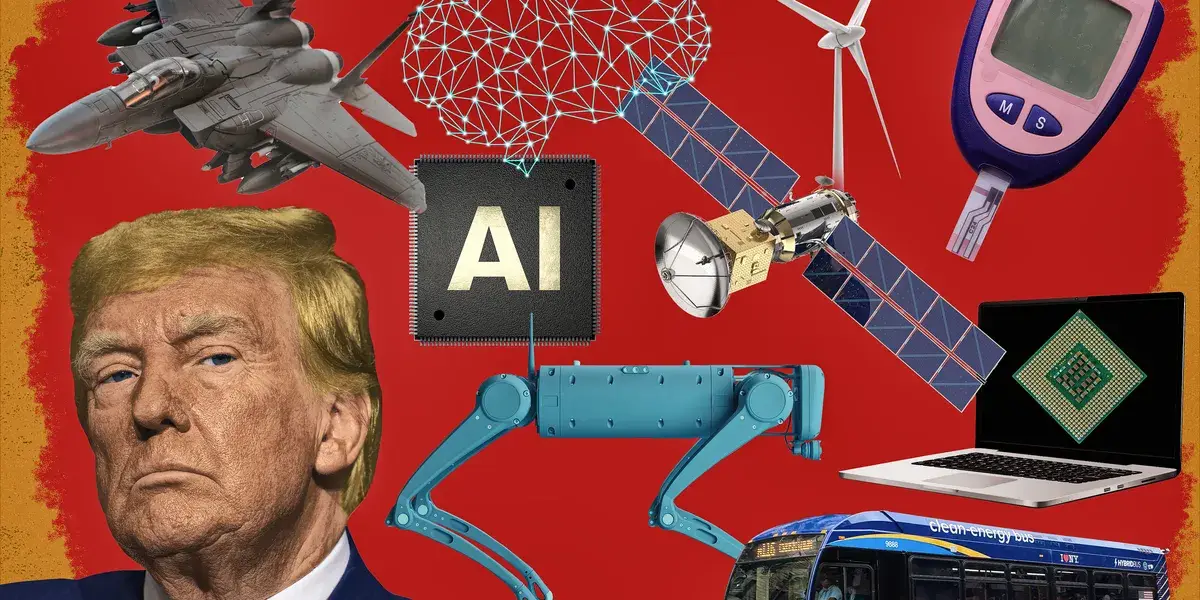
Trump’s “One Big Beautiful Bill” (OBBB), why it’s stirring controversy, and what it means for technology, business, and society:
What the Bill Includes
A recent provision buried on pages 278–279 of the OBBB prohibits any state or local government from adopting or enforcing laws or regulations on artificial intelligence, including facial recognition, generative AI, and automated decision systems, for a full 10 years brookings.edu+13theguardian.com+13washingtonpost.com+13.
In its Senate version, lawmakers suggested tying compliance to broadband funding—threatening states with penalties if they pass AI rules before the moratorium ends apnews.com+4apnews.com+4en.wikipedia.org+4.
⚠️ Why This Is Raising Red Flags
1. Preempts Existing State Laws
It would override active AI laws in states like California, Colorado, and New Jersey—many of which address discrimination, deepfakes, privacy, and algorithmic biasogletree.com+14businessinsider.com+14washingtonpost.com+14.
2. Broad Political Backlash
Politicians across the spectrum have criticized the clause.
Rep. Marjorie Taylor Greene, who initially voted for OBBB, later slammed the AI provision as a “violation of state rights” and pledged to oppose it unless removed washingtonpost.com+5theguardian.com+5thedailybeast.com+5.
Executives like OpenAI’s Sam Altman argue a unified federal standard—rather than a decade without any oversight—is a more effective approach theguardian.com+6apnews.com+6reuters.com+6.
3. Industry Voices Say It’s Too Heavy-Handed
Anthropic CEO Dario Amodei called the moratorium “too blunt”, warning it could stall both innovation and safety, urging a model requiring transparency, testing disclosures, and risk mitigation instead reuters.com.
4. Concerns About “Unfettered AI Abuse”
A coalition of 141 groups—spanning civil rights, labor, and academia—warned that blocking state regulations could lead to unchecked harms: fraud, discrimination, deepfake abuse, and threats to civil liberties businessinsider.com.
🌍 What it Means for Stakeholders
🎯 Tech Companies
A decade free from state-level AI rules reduces compliance costs and regulatory complexity—ideal for scaling generative AI, facial recognition, and hiring tools.
🏙️ States & Local Government
This moratorium could restrict efforts to curb algorithmic bias in housing, policing, credit scoring, and other high-impact public uses.
🧠 Innovation vs. Oversight
Proponents argue it prevents a fragmented patchwork of state laws, enabling national competitiveness. Critics counter that with exponential AI growth, state safeguards are vital for safety and accountability.
✅ Pros & Cons You Should Know
Pros
-
Regulatory clarity: Simplifies rules for companies nationwide.
-
Industry boost: Encourages AI investment by avoiding state-level barriers.
-
Federal coherence: Opens the door for a uniform national AI framework in the future.
Cons
-
Eliminates local safeguards: Vulnerable populations lose protections.
-
Creates a 10-year “regulatory gap”: No state-level oversight during transformative tech evolution.
-
Reduces public trust: Citizens may fear unchecked technologies in public-facing systems.
🧭 What’s Next?
-
Big fight in Senate: The AI clause is being considered under budget rules. Its fate remains uncertainthedailybeast.com+8washingtonpost.com+8people.com+8theguardian.com.
-
State pushback: Governors and attorneys general may sue, citing federal overreach into constitutionally protected local authority.
-
Calls for alternatives: Many prefer a federal transparency mandate over a full moratorium on regulationmondaq.com+12reuters.com+12washingtonpost.com+12.
🧩 Final Take
This 10-year moratorium is a bold gambit—aiming to protect national AI expansion but risking harm by silencing state-level safety measures. Supporters promise innovation; critics fear unfettered AI development could escalate deepfakes, bias, and digital surveillance.
Whether it becomes law—or is removed—will be determined in the Senate in the coming days. The outcome will shape the balance between innovation and civil rights in America’s AI future.
Want to stay updated?
🔔 Subscribe to get real-time alert on the Senate vote and expert commentary right here.

 The 10-Year AI Regulation Freeze: What the Trump-Backed Bill Means for the Future of Artificial Intelligence.
The 10-Year AI Regulation Freeze: What the Trump-Backed Bill Means for the Future of Artificial Intelligence.
0 Comment